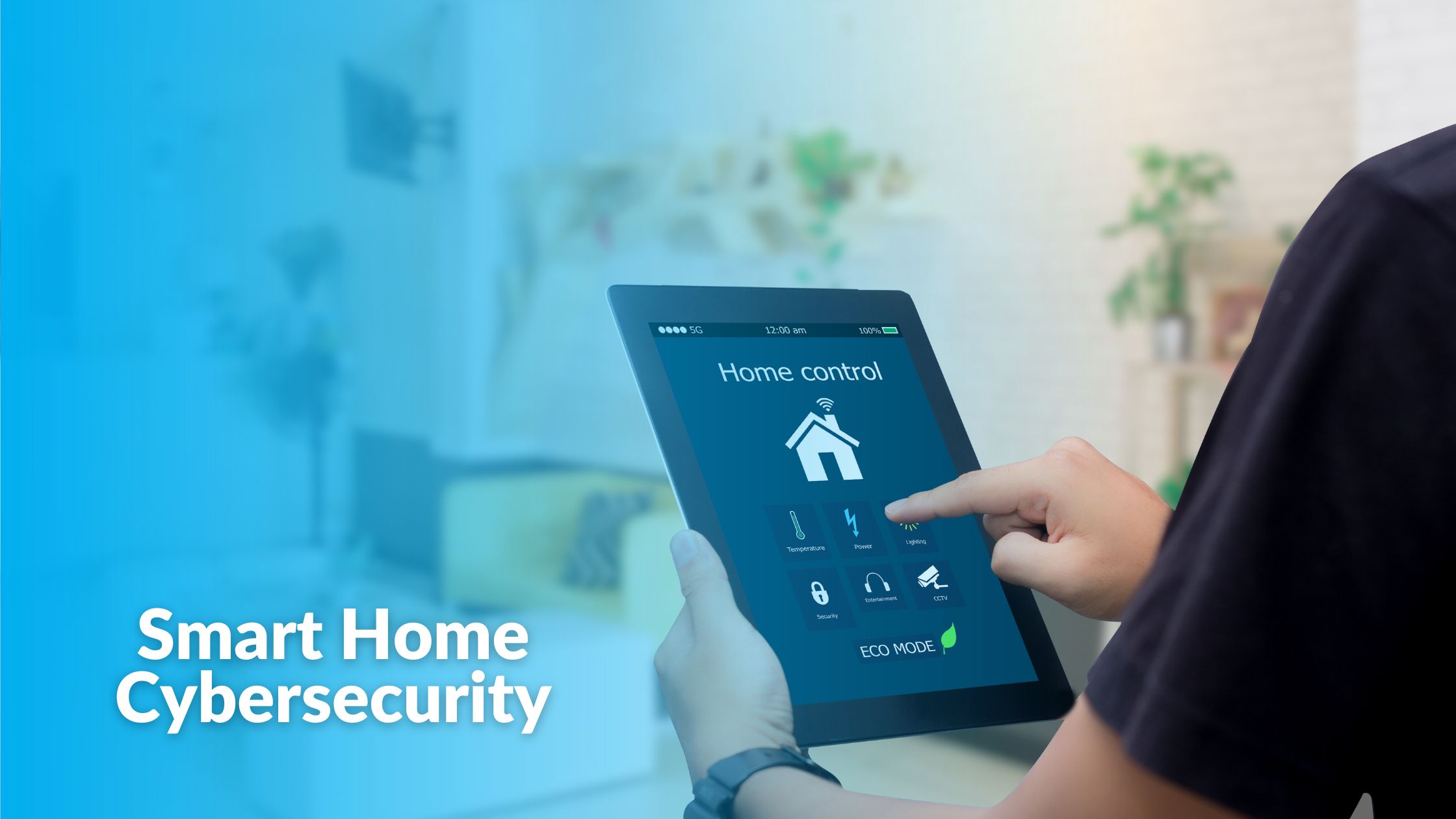

Top 3 Smart Home Cyber Security Risks and 35 Ways How to Prevent Them
- 21. 11. 2023 03:30
Smart technology has made our homes more efficient and comfortable than ever before.
We can find smart devices like thermostats, air purifiers, lights, security cameras, door locks, home monitors, home security camera app, dog or baby monitors, and smart speakers everywhere we look.
We gotta be careful when we go all-in on digital security. That’s why we need to have strong cyber security measures in place.
With all the smart devices we have at home, we gotta make sure we’re protected from any cyber threats that may come.
Explore the basics of smart home cybersecurity and learn how to secure your home in the digital age.
Common Smart Home Cyber Security Threats
Smart homes have become increasingly popular, but they come with their own set of cyber security risks.
Being aware of these risks is crucial in order to protect your smart home from digital intruders.
Let’s uncover the 3 common cybersecurity threats for smart homes that you should be aware of.
Let’s check out 35 ways to keep you safe from sneaky hackers, data breaches, and also keep your privacy protected.

A. Unauthorized Access
Unauthorized access is when somebody gets into your smart home gadgets without your permission.
This can happen in different ways, like when someone from afar changes your device’s settings or takes complete control of it.
This isn’t just a problem because it disrupts your smart home’s function. It’s also a serious risk to your privacy and security.
It’s important to take steps to secure your smart home devices and protect yourself from unauthorized access.
Here are 10 effective ways to secure your smart home from unauthorized access:
1. Secure Wi-Fi Network
- Strong Password: Set a strong and unique password for your Wi-Fi network. Avoid using default passwords and opt for a combination of letters, numbers, and special characters.
- WPA3 Encryption: Use the latest Wi-Fi Protected Access (WPA3) encryption standard, which provides enhanced security compared to older protocols like WPA2.
2. Device Passwords
- Unique and Strong Passwords: Change default passwords on all smart devices connected to your network. Use complex and unique passwords for each device.
- Regular Updates: Keep your device passwords updated and change them regularly. Ensure that any default passwords are changed during the device setup.
3. Two-Factor Authentication (2FA)
- Enable 2FA: Whenever possible, enable two-factor authentication for your smart home devices. This adds an extra layer of security by requiring a secondary verification step, such as a code sent to your phone.
4. Network Segmentation
- Create Separate Networks: Segment your smart home devices onto a separate network from your primary devices like smartphones and computers. This way, even if one part of the network is hacked, the entire network is not at risk.
5. Regular Software Updates
- Firmware Updates: Ensure that all smart devices have the latest firmware and software updates. Manufacturers often release updates to handle security vulnerabilities.
6. Monitor Device Permissions
- Review Device Access: Regularly check each connected device’s permissions and access levels. Revoke unnecessary permissions and limit access to only what is essential for functionality.
7. Guest Network for Visitors
- Isolate Guest Devices: If your router supports it, create a separate guest network for visitors. This ensures that guests can connect to the internet without gaining access to your smart home devices.
8. Network Monitoring Tools
- Use Security Software: Consider using network monitoring tools or security software that can identify and alert you to any unusual activity on your network.
9. Disable Unused Features
- Turn Off Unnecessary Features: If a smart device has features you don’t use, consider disabling them. This reduces the potential attack surface for unauthorized access.
10. Regular Audits
- Audit Connected Devices: Regularly audits all devices connected to your smart home network. Remove any devices that are no longer in use or needed.

B. Data Breaches
Smart homes are vulnerable to data breaches when sensitive information stored in smart devices is accessed, acquired, or disclosed without permission. This sensitive information can include personal details, login credentials, and financial data.
Because smart devices are connected and share data, a security breach of one device can potentially put the entire smart home system at risk.
The consequences of such a breach can be serious and can include identity theft, financial loss, and other serious consequences.
There are various measures that can be taken to prevent data breaches. Here are 12 effective ways:
1. Strong Network Security
- Firewall Protection: Enable a firewall on your router to monitor and control incoming and outgoing network traffic.
- Intrusion Detection System (IDS): Consider using an IDS to detect and alert you to potential unauthorized access or suspicious activity on your network.
2. Data Encryption
- End-to-End Encryption: Choose smart devices and platforms that support E2EE encryption for data transmission. This ensures that data is only accessible to authorized parties.
3. Regular Software Updates
- Firmware and Software Updates: Keep all smart devices, routers, and associated software up to date. Manufacturers frequently release updates that handle security vulnerabilities.
4. Secure Password Practices
- Unique and Strong Passwords: Use strong, unique passwords for each smart device and related accounts. Avoid using default passwords, and consider using a password manager for added security.
5. Two-Factor Authentication (2FA)
- Enable 2FA: Whenever possible, enable two-factor authentication for your smart home devices. This adds an extra layer of security by requiring a secondary verification step, such as a code sent to your phone.
6. Limit Data Collection
- Review Privacy Settings: Regularly review and adjust the privacy settings on your smart devices. Disable unnecessary data collection to minimize the amount of personal information being stored.
7. Secure Cloud Services
- Choose Reputable Providers: If your smart devices use cloud services, choose reputable, well-established providers with strong security measures.
8. Regular Audits
- Audit Connected Devices: Regularly audits all devices connected to your smart home network. Remove any devices that are no longer in use or needed.
9. Network Segmentation
- Create Separate Networks: Segment your smart home devices onto a separate network from your primary devices. This limits the potential impact of a data breach, as it isolates the smart home system.
10. Monitor Account Activity
- Regularly Check Device Activity: Keep an eye on your smart device’s activity logs and access history. Be watchful for any suspicious or unexpected activity.
11. Educate Household Members
- Cybersecurity Awareness: Educate everyone in your household about the importance of cybersecurity. Ensure they know potential risks and how to recognize and respond to security threats.
12. Check Manufacturer Privacy Policies
- Understand Data Handling: Familiarize yourself with the privacy policies of the manufacturers of your smart devices. Ensure they have clear guidelines on how they handle and protect user data.

C. Privacy Concerns
Smart devices constantly monitor and collect data, which can raise privacy concerns.
While this data collection is often necessary for the proper functioning of the devices, it raises questions about the importance of the potential misuse of the collected data.
Users must understand that the convenience of having a smart home comes with a certain level of surveillance.
There are various measures that can be taken to protect personal data. Here are 13 effective ways:
1. Read Privacy Policies
- Thoroughly Review Policies: Before purchasing any smart device, read the manufacturer’s privacy policy. Understand how your data will be collected, stored, and shared.
2. Limit Data Collection
- Disable Unnecessary Features: Turn off any unnecessary data collection features on your devices. Some devices offer options to limit data sharing and collection in their settings.
3. Use Local Storage
- Select Local Storage: Choose devices that store data locally rather than on cloud servers. This gives you more control over your data and reduces the risk of third-party access.
4. Review App Permissions
- Check App Permissions: Regularly check and update permissions for smart device apps on your smartphone. Disable any permissions that are not crucial for functionality.
5. Secure Voice Assistants
- Manage Voice Data: If you use voice-activated devices, regularly review and delete voice recordings stored by these devices. Many devices allow you to manage and delete voice data in their settings.
6. Network Segmentation
- Separate Smart Devices: Secure your smart home devices by putting them on a separate network from your main devices. This limits their access to personal information and reduces the risk of data leaks.
7. Use Offline Modes
- Disable Online Connectivity: When not needed, consider disabling online connectivity for certain devices. This prevents them from sending data to external servers.
8. Invest in Privacy-Focused Devices
- Choose Privacy-Centric Brands: Research and choose smart devices from manufacturers with a strong commitment to user privacy. Some brands prioritize user privacy and data security in their product design.
9. Regularly Update Devices
- Firmware and Software Updates: Keep all your devices, including smart ones, updated with the latest firmware and software. Manufacturers often release updates to handle security and privacy vulnerabilities.
10. Educate Household Members
- Share Privacy Awareness: Educate everyone in your household about the potential privacy implications of smart devices. Ensure they understand the importance of managing settings and permissions.
11. Review Device Permissions
- Device Access: Periodically review the permissions granted to each smart device. Disable any unnecessary access to personal information.
12. Consider Smart Home Hubs
- Centralized Control: If you have multiple smart devices, consider using a smart home hub. Some hubs provide centralized control and monitoring, allowing you to manage privacy settings more efficiently.
13. Understand Data Practices
- Research Data Practices: Be aware of how different devices handle data. Some devices may send data to third-party services for analysis, while others keep data processing on the device itself.
Conclusion
Making sure your smart home is safe and secure is super important.
To do this, you need to stay alert and take action to protect it.
By doing this, you can create a digital safe smart home that is strong and resilient.
To secure your smart home, keep these tips in mind:
- Use strong passwords and encryption to protect your network and devices.
- Keep software and firmware up-to-date and audit device permissions regularly.
- Enable Two-Factor Authentication and limit data collection.
- Invest in reputable devices with end-to-end encryption and review app permissions.
- Stay informed about advances in cybersecurity and adapt to emerging threats.
FAQ: Smart Home Cyber Security
Yes, smart homes can pose cybersecurity risks if not properly secured, as interconnected devices may be vulnerable to unauthorized access and data breaches.
The security of a smart home depends on how well it is protected. Implementing strong passwords, regular updates, and security measures can significantly enhance a smart home’s security.
Smart home networks face security issues like unauthorized access and data breaches. Weak passwords and outdated software can make these networks vulnerable to cyber hazards.
A smart home is at risk from hackers if devices have weak passwords or outdated software or the network lacks proper security measures, enabling unauthorized access and potential breaches of personal information.
- 21. 11. 2023 03:30





